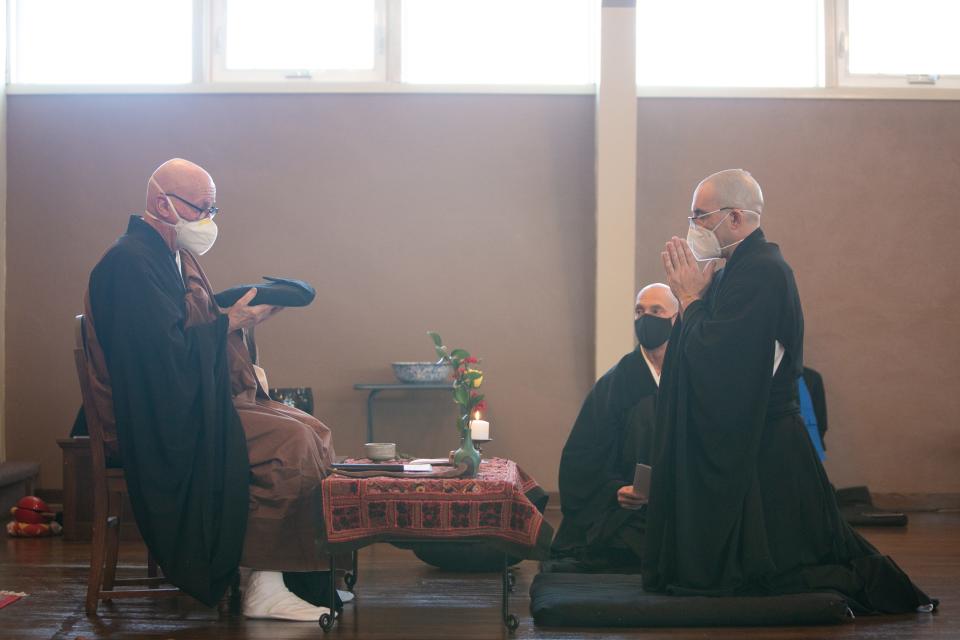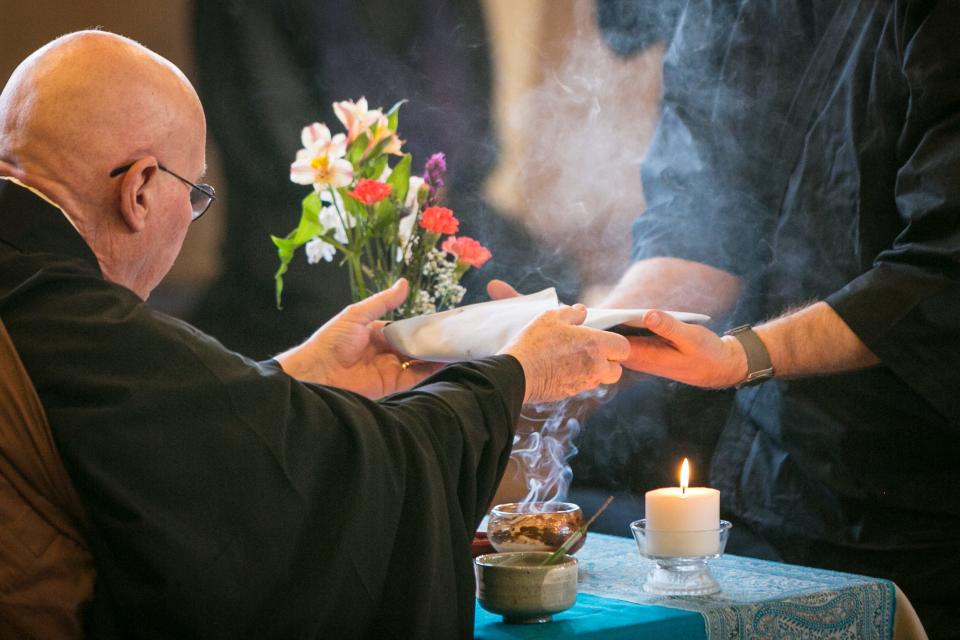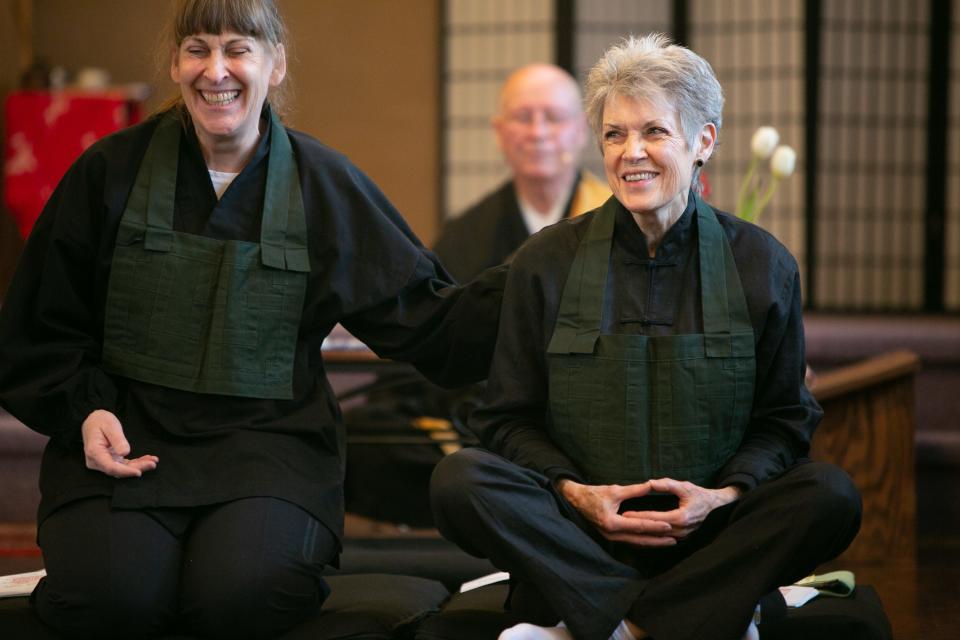Zen practitioners place their focus on meditation at Des Moines temple
Des Moines' own Buddhist temple offers community members a chance for Zen and meditation through an array of practices available to everyone, irrespective of their spirituality.
The Rev. Eishin Tom Houghton is the head of spiritual teaching for the Des Moines Zen Center. According to its website, the Zen center follows the Soto Zen tradition, which places the greatest emphasis upon meditation.
“I would say that the main practice is the practice of meditation, which in Zen tradition is called 'zazen' … and it just translates to 'sitting meditation,'” Houghton said.
The Zen center, located near the Des Moines airport, requires nothing from those seeking to engage in Zen practices with the group.
“We are here and we're open to anybody,” Houghton said. “There's no requirement that you have to have to come here first. This can be practiced alongside any other religion.”

The Zen center, also known as the Deep River Temple or Shinsenj, received its designation by Sotoshu, the international Soto Zen Mission, on May 19, 2021.
“We are recognized by the Japanese school of Zen as a bonafide international temple,” Houghton said. “We do have roots to go all the way back through Japan, China and India.”
In Buddhism, practitioners are referred to as the "sangha," used in the same fashion as the words congregation or parish in other religious practices.
“I think Zen is kind of like a buzzword right now, but I don't think people know much about it, if anything,” said Nick Tremmel, a sangha member of the temple. “I think people would be interested to know that there's a really well-established Zen temple right here in Des Moines, Iowa.”

Members of the community gather at the Zen center on Sundays and Wednesdays and can participate in a selection of practices, including: zazen, or sitting meditation; kinhin, or walking meditation; a Zen study group; a morning service; discussions on dharma or the teaching or doctrines of Buddha; and socializing with the members of the temple.
“The primary teaching of the Buddha was … about suffering and what causes suffering, and that it is possible to eliminate the suffering, and how to do that,” Houghton said.
Buddhism came to fruition through the melding of various spiritual practices, Houghton said, adding that at its foundation, Buddhism teaches that all individuals have the ability to reach an awakening, but that the path to it is as difficult as finding a diamond buried in a mountain.
“As it evolved down through the centuries, it branched off into many different forms," Houghton said.
One form went to China through an Indian sage. Then Indian Buddhism merged with Chinese Taoism and Confucianism.
"And that's how the flower of Zen bloomed,” Houghton said.

Houghton said the key to touching one's Buddha nature is introspection.
“This first patriarch of Zen … he taught that you can't touch your Buddha nature by reading or listening to words, or through conceptual intellectual processes,” Houghton said. “It's more of an intuitive process, and you touch it by turning the light of your awareness around so it's not focused out externally; it's focused internally.”
Houghton said there are three levels of ordination in the Zen tradition, which are denoted by the color of the ordained individuals "rakusu," a garment that must be hand-sewn by the wearer.
Blue denotes lay ordination and requires the least amount of time to sew due to its size. Black represents an individual's ordination as a priest, which requires the recipient to sew a robe-like full-body garment in the same color. A brown rakusu denotes an individual's ordination as a teacher and is the final level of ordination.
“We see how busy our mind can be, and the practice is to try and and take all these thoughts that are like clouds blocking the sun, and kind of park them so this nature that we have inside — a nature of joy and peace, and wisdom and compassion — that that all has a chance to come out,” Houghton said.
Biong M. Biong is a reporter for the Register. Reach him at bbiong@dmreg.com.
This article originally appeared on Des Moines Register: Des Moines Zen Center invites practitioners of all faiths

